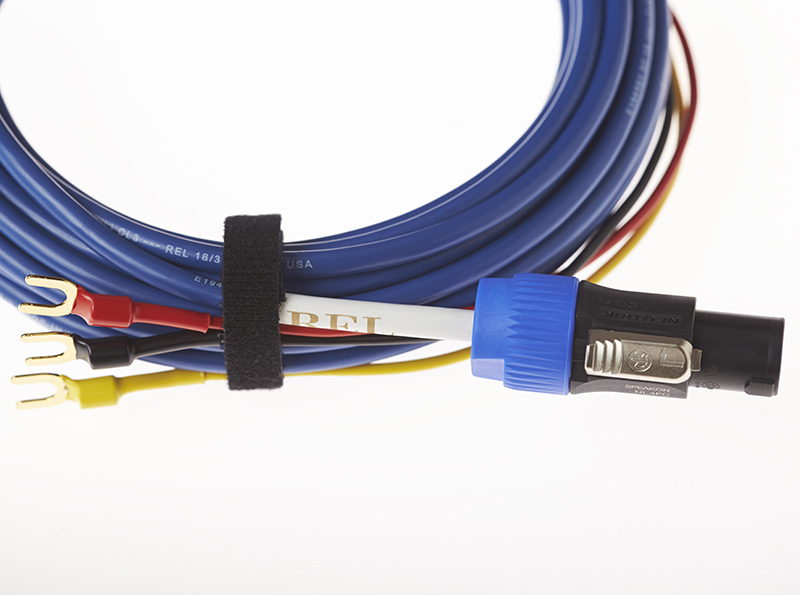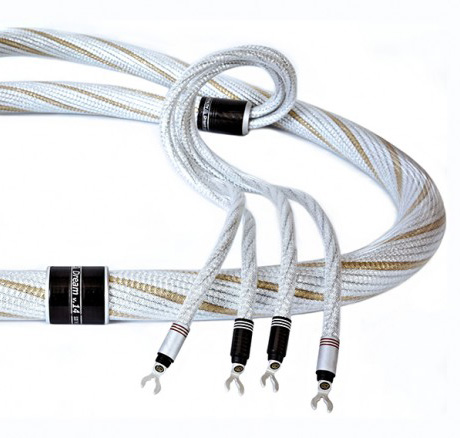Blog
Revisiting Bassline Blue
Performance Benefits and Why it Was Designed

“You guys at REL are so good at marketing but you’re not doing your job with Bassline Blue. I just bought a pair on the encouragement of a friend and it’s the second biggest improvement I’ve ever made to my system—adding a pair of RELs was the biggest. You need to get the word out.”
–Richard D, Texas
Um, ok Richard, thanks.
Perhaps we start with why we created BassLine Blue in the first place. Frankly, we were fed up with what most of what the cable companies were doing. Still do, for the most part. Most grab any piece of wire they make, stick a Speakon connector on it and call it a REL cable. It’s thoughtless, lazy and smacks of terrible engineering. Band wagoning on REL’s success without even trying to understand what we’re doing. Worse, most are terrible value. And a few are downright dangerous.
On one occasion, we know of a poor customer’s main amplifier that was blown up shortly after correctly connecting a new cable. He successfully argued that his amplifier and REL had been working just fine together for 5 years running and that he had checked the connections several times to make sure he had connected them exactly as his original real REL cable and his amp went up in smoke within 30 seconds of connecting and turning everything back on.
Something clearly had to be done, you see we’re not one of those head-in-the-sand audio companies that doesn’t believe that cables make no difference. We’ve known for almost 40 years that for speaker cables, interconnects, HDMI and digital—not to mention a/c–we can hear the benefits when they get it right and the downside when it’s poorly executed. Like it or not, cables matter and the flat earth audio types can complain all they want but they’re simply in denial. But connecting to our impedance environment is unique and this is where conventional cable companies get it wrong.

Start with speaker cables, these are often where most cable companies go off the rails. Presumably, their thinking extends no further than “Hey, a REL’s a subwoofer. A sub is a kind of speaker. Ergo, we’ll throw a Speakon onto our Cro-Magnon speaker cable (Not a real product name folks). I believe the thinking runs something along the lines of “It’s gotta be better, after all, our cable is 20 times thicker than the wimpy little wires REL uses.”
And that might be vaguely useful if REL’s High Level Input didn’t use an input impedance well above 100,000 ohms. Let me say again s-l-o-w-l-y. 100,000+ ohms of input impedance. Which means the concept of big Cro-Magnon cables has exactly zero usefulness because the REL cable carries virtually zero current. And why do many speaker cables resort to larger gauge wire in part? Because thicker wire carries more current, which, in this case matters not at all. It’s like using a high-pressure firehose to rinse your mouth after brushing your teeth. You could do it, but that doesn’t make it a smart idea.
Your main amplifier, your typical 100 watt/ch. stereo amp, is designed to deliver a very low output impedance. This is because loudspeakers typically produce a fairly low impedance themselves and it’s critical for the amplifier’s output impedance to get way down low, almost to zero, in order for the speaker to have as little negative impact on sound as possible. But REL doesn’t build passive loudspeakers, we build amplified, powered subwoofers that simply sound their best when fed a signal that includes the whole audio system, including the main interconnecting cables (see, there we go again, affirming that cables DO make a beneficial difference) AND the power amplifier that is feeding your speakers. As such, we need a very high input impedance to knock the gain back down so that our big amplifiers, typically far more powerful than your main amp, can go about their business of making incredible sounding and incredibly deep bass. So, scratch the idea of big fat cables.

The next thing we run into that frankly scares the hell out of us, is networked cables that have multiple components like resistors, capacitors and coils used within a serious looking box, usually placed about 3’ (1M) from the end of the cable. Again, these are speaker cable designs so there’s that issue (read the paragraphs above as to why speaker cables themselves are a big problem when used as REL cables), but these components are generally placed between hot and ground. Now, that’s actually a good idea for those low impedance speakers because the idea behind networked speaker cables is that they can lower something called the complex impedance of a cable. Stay with me, none of this stuff is as complicated as many want you to believe.
Bottom line? Any speaker cable that doesn’t run a network or doesn’t have some seriously carefully-made insulation becomes much higher impedance as you get down into the bass frequencies. What scares us about networked speaker cables when used as REL cables is that absolutely no one has studied the effects of these networks (designed to be used between a power amp and a low impedance speaker) when connecting the same power amp to a super high input impedance. We have seen over the years a couple instances of a networked cable resulting in damage. Let’s call the networked REL cable approach two bad ideas rolled into one package.
So what does work? Simple, narrow-gauge cable geometry, using very high-quality copper resulting in wide bandwidth that goes out to somewhere around Channel 7 in video. This is important because anything that doesn’t allow for effortless high frequency performance will beat its way back down into the bass regions and undo all our hard work in our subwoofers.
We hand assemble our cables using pure silver solder and simple spade connectors because they sound far and away better than anything else we listened to. More importantly, its geometry works for that very high input impedance we use in our High Level input. That’s it. No mumbo jumbo. Just basic, sound engineering techniques put into practice by the same team that designs the very filter boards employed in every REL over the past two decades or so. And then we priced it as fairly as we could afford to, so that more people could have access to it. Because, let’s be clear, we stand to benefit far more from a cable, properly designed at an affordable price that results in RELs sounding better, than can cable companies who must rely entirely on the sale of their cable.
BassLine Blue is more like marketing material than a profit center for REL. So to our good friend Richard D. from Texas, thank you for kicking us into finally explaining what BassLine Blue is all about and why we can afford to build a great cable at a friendly price.











